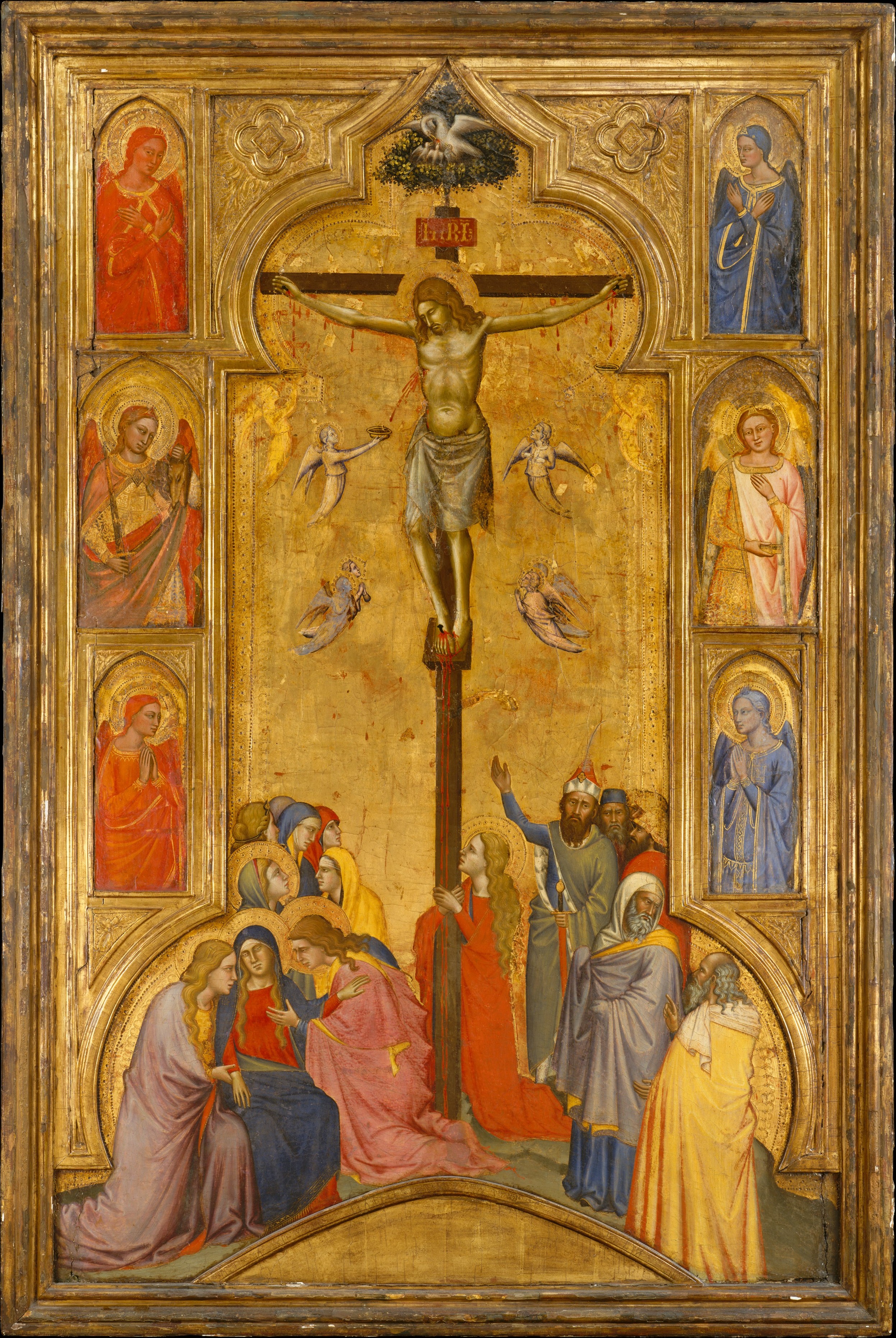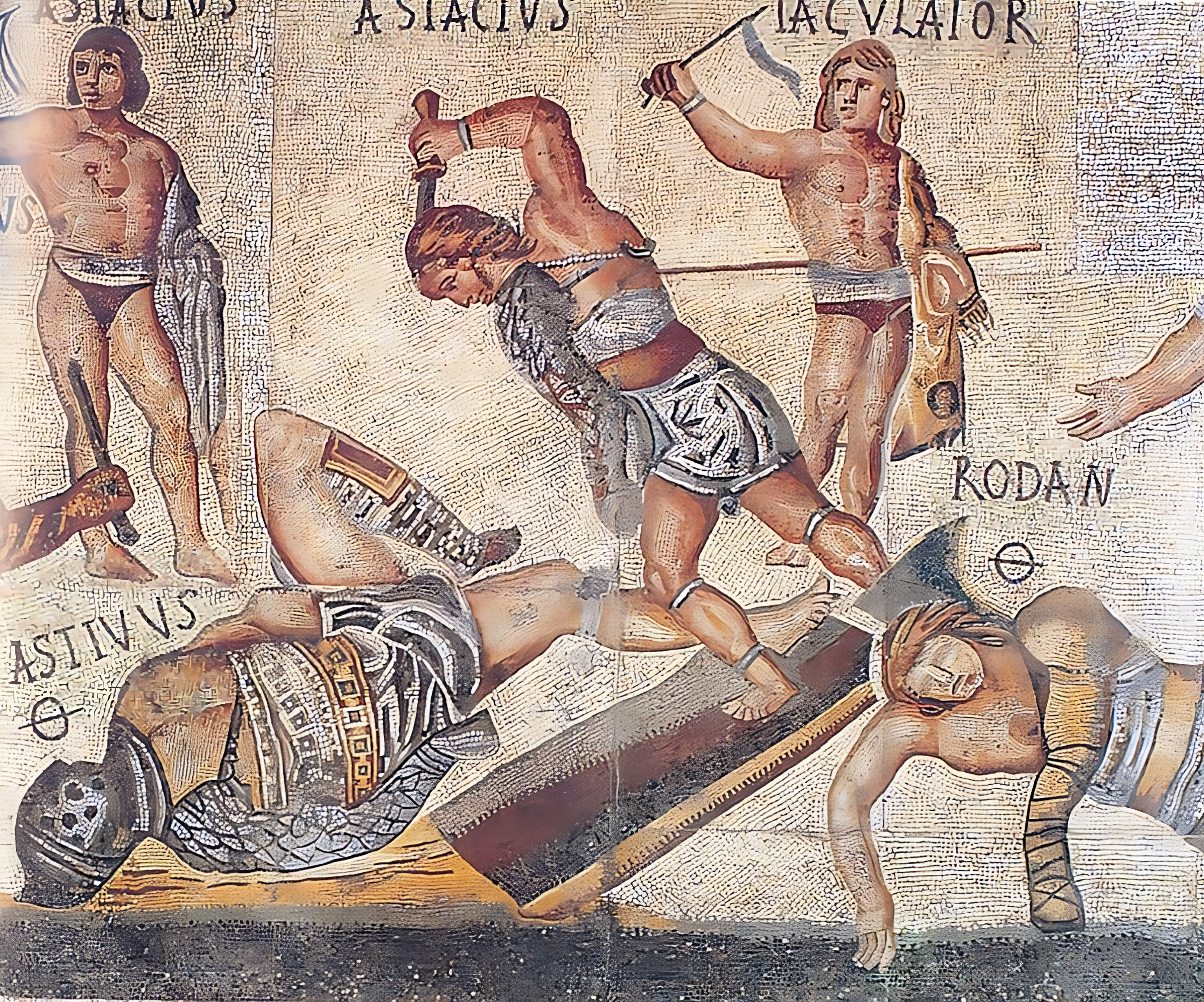|
Late Antique And Medieval Mosaics In Italy
Italy has the richest concentration of Late Antique and medieval mosaics in the world. Although the art style is especially associated with Byzantine art and many Italian mosaics were probably made by imported Greek-speaking artists and craftsmen, there are surprisingly few significant mosaics remaining in the core Byzantine territories. This is especially true before the Byzantine Iconoclasm of the 8th century. Late Antique mosaics "Early Roman mosaics belonged to the floor"; except in Nero's Domus Aurea, there is little evidence of ambitious wall mosaics before the Christian period, even at Pompeii and surrounding sites, where chances of survival were better than elsewhere. The famous Alexander Mosaic (c. 100) from Pompeii was a floor, and the main use of vertical mosaics was for places unsuitable for frescos, such as fountains, baths and garden architecture including the very popular nymphaeum. Sumptuous floor mosaics found by archaeology in villas continue into the Lat ... [...More Info...] [...Related Items...] OR: [Wikipedia] [Google] [Baidu] |
Archaeology
Archaeology or archeology is the scientific study of human activity through the recovery and analysis of material culture. The archaeological record consists of artifacts, architecture, biofacts or ecofacts, sites, and cultural landscapes. Archaeology can be considered both a social science and a branch of the humanities. It is usually considered an independent academic discipline, but may also be classified as part of anthropology (in North America – the four-field approach), history or geography. Archaeologists study human prehistory and history, from the development of the first stone tools at Lomekwi in East Africa 3.3 million years ago up until recent decades. Archaeology is distinct from palaeontology, which is the study of fossil remains. Archaeology is particularly important for learning about prehistoric societies, for which, by definition, there are no written records. Prehistory includes over 99% of the human past, from the Paleolithic until the adven ... [...More Info...] [...Related Items...] OR: [Wikipedia] [Google] [Baidu] |
Lateran Basilica
The Archbasilica Cathedral of the Most Holy Savior and of Saints John the Baptist and John the Evangelist in the Lateran ( it, Arcibasilica del Santissimo Salvatore e dei Santi Giovanni Battista ed Evangelista in Laterano), also known as the Papal Archbasilica of Saint John nLateran, Saint John Lateran, or the Lateran Basilica, is a Catholic cathedral church of the Diocese of Rome in the city of Rome, and serves as the seat of the bishop of Rome, the pope. The archbasilica lies outside of Vatican City proper, which is located approximately to the northwest. Nevertheless, as properties of the Holy See, the archbasilica and its adjoining edifices enjoy an extraterritorial status from Italy, pursuant to the terms of the Lateran Treaty of 1929. The church is the oldest and highest ranking of the four major papal basilicas as well as one of the Seven Pilgrim Churches of Rome, holding the unique title of "archbasilica". Founded in 324, it is the oldest public church in the city of Ro ... [...More Info...] [...Related Items...] OR: [Wikipedia] [Google] [Baidu] |
Gold Ground
Gold ground (both a noun and adjective) or gold-ground (adjective) is a term in art history for a style of images with all or most of the background in a solid gold colour. Historically, real gold leaf has normally been used, giving a luxurious appearance. The style has been used in several periods and places, but is especially associated with Byzantine and medieval art in mosaic, illuminated manuscripts and panel paintings, where it was for many centuries the dominant style for some types of images, such as icons. For three-dimensional objects, the term is gilded or gold-plated. Gold in mosaic began in Roman mosaics around the 1st century AD, and originally was used for details and had no particular religious connotation, but in Early Christian art it came to be regarded as very suitable for representing Christian religious figures, highlighting them against a plain but glistering background that might be read as representing heaven, or a less specific spiritual plane. Full- ... [...More Info...] [...Related Items...] OR: [Wikipedia] [Google] [Baidu] |
St Peter's, Rome
The Papal Basilica of Saint Peter in the Vatican ( it, Basilica Papale di San Pietro in Vaticano), or simply Saint Peter's Basilica ( la, Basilica Sancti Petri), is a church built in the Renaissance style located in Vatican City, the papal enclave that is within the city of Rome, Italy. It was initially planned by Pope Nicholas V and then Pope Julius II to replace the aging Old St. Peter's Basilica, which was built in the fourth century by Roman emperor Constantine the Great. Construction of the present basilica began on 18 April 1506 and was completed on 18 November 1626. Designed principally by Donato Bramante, Michelangelo, Carlo Maderno and Gian Lorenzo Bernini, St. Peter's is the most renowned work of Renaissance architecture and the largest church in the world by interior measure. While it is neither the mother church of the Catholic Church nor the cathedral of the Diocese of Rome (these equivalent titles being held by the Archbasilica of Saint John Later ... [...More Info...] [...Related Items...] OR: [Wikipedia] [Google] [Baidu] |
Tomb Of The Julii
The popularly named "Tomb of the Julii" (Mausoleum "M") survives in the Vatican Necropolis beneath St. Peter's Basilica. The serendipitous discovery near the crypt has a vaulted ceiling bearing a mosaic depicting Helios (Roman Sol Invictus) with an aureole riding in his chariot, within a framing of rinceaux of vine leaves. The mosaic is dated to the late 3rd century to early 4th century. Other mosaics in this tomb depicting Jonah and the whale, the good shepherd carrying a lamb (the ''kriophoros'' motif), and fishermen have encouraged its interpretation as a Christian tomb. This tomb was first discovered in 1574 AD when workmen accidentally broke through the ceiling while conducting some floor alterations in the basilica. The inside was briefly explored and documented before the opening was sealed over once more.The Bones of Saint Peter, John Evangelist Walsh 1982 See also * St. Peter's Basilica * Index of Vatican City-related articles References * Beckwith, John 1979. ''Early ... [...More Info...] [...Related Items...] OR: [Wikipedia] [Google] [Baidu] |
Jonah
Jonah or Jonas, ''Yōnā'', "dove"; gr, Ἰωνᾶς ''Iōnâs''; ar, يونس ' or '; Latin: ''Ionas'' son of Amittai, is a prophet in the Hebrew Bible and the Quran, from Gath-hepher of the northern kingdom of Israel in about the 8th century BCE. Jonah is the central figure of the Book of Jonah, which details his reluctance in delivering God's judgement on the city of Nineveh. Subsequently he returns to the divine mission after he is swallowed by a large sea creature and then released. In Judaism, the story of Jonah represents the teaching of ''teshuva'', which is the ability to repent and be forgiven by God. In the New Testament, Jesus calls himself "greater than Jonah" and promises the Pharisees "the sign of Jonah", which is his resurrection. Early Christian interpreters viewed Jonah as a type for Jesus. Jonah is regarded as a prophet in Islam, and the biblical narrative of Jonah is repeated in the Quran. Mainstream Bible scholars generally regard the Book of Jona ... [...More Info...] [...Related Items...] OR: [Wikipedia] [Google] [Baidu] |
Good Shepherd
The Good Shepherd ( el, ποιμὴν ὁ καλός, ''poimḗn ho kalós'') is an image used in the pericope of , in which Jesus Christ is depicted as the Good Shepherd who lays down his life for his sheep. Similar imagery is used in Psalm 23 and Ezekiel 34:11–16. The Good Shepherd is also discussed in the other gospels, the Epistle to the Hebrews, the First Epistle of Peter and the Book of Revelation. Biblical references In the Gospel of John, Jesus states "I am the good shepherd" in two verses, and . This passage is one of several sections of John's Gospel which generate division among Jews. Jesus Christ is also compared to a shepherd in , , , , , , , , , , and . Parable or metaphor? Several authors such as Barbara Reid, Arland Hultgren or Donald Griggs comment that "parables are noticeably absent from the Gospel of John". According to the ''Catholic Encyclopedia'' article on Parables: "There are no parables in St. John's Gospel" and according to the ''Encyclopædia ... [...More Info...] [...Related Items...] OR: [Wikipedia] [Google] [Baidu] |
Catacombs Of Rome
The Catacombs of Rome ( it, Catacombe di Roma) are ancient catacombs, underground burial places in and around Rome, of which there are at least forty, some rediscovered only in recent decades. Though most famous for Christian burials, either in separate catacombs or mixed together, Jews and also adherents of a variety of pagan Roman religions were buried in catacombs, beginning in the 2nd century AD,Toynbee: 39–40. occasioned by the ancient Roman ban on burials within a city, and also as a response to overcrowding and shortage of land. The most extensive and perhaps the best known is the Christian Catacomb of Callixtus located near the Park of the Caffarella, but there are other sites, both Christian and not, scattered around the city, some of which are now engulfed by modern urban sprawl. The Christian catacombs are extremely important for the history of Early Christian art, as they contain the great majority of examples from before about 400 AD, in fresco and sculpture, as ... [...More Info...] [...Related Items...] OR: [Wikipedia] [Google] [Baidu] |
Aquileia
Aquileia / / / / ;Bilingual name of ''Aquileja – Oglej'' in: vec, Aquiłeja / ; Slovenian: ''Oglej''), group=pron is an ancient Roman city in Italy, at the head of the Adriatic at the edge of the lagoons, about from the sea, on the river Natiso (modern Natisone), the course of which has changed somewhat since Roman times. Today, the city is small (about 3,500 inhabitants), but it was large and prominent in classical antiquity as one of the world's largest cities with a population of 100,000 in the 2nd century AD and is one of the main archaeological sites of northern Italy. In late antiquity the city was the first city in the Italian Peninsula to be sacked by Attila the Hun. History Classical Antiquity Roman Republic Aquileia was founded as a colony by the Romans in 180/181 BC along the Natiso River, on land south of the Julian Alps but about north of the lagoons. The colony served as a strategic frontier fortress at the north-east corner of transpadane Ital ... [...More Info...] [...Related Items...] OR: [Wikipedia] [Google] [Baidu] |
Gladiator Mosaic
The Gladiator Mosaic'' is a famous set of 5 large mosaics of gladiators and venators measuring about 28 meters, dated to the first half of the 4th century and installed in the Salone of the Galleria Borghese. It was discovered in 1834 on the Borghese estate at Torrenova, on the Via Casilina outside Rome. It is believed to have decorated a cryptoporticus of a large domus. These antiquities reinvigorated the Borghese Collection after it had shrunk following the sale of much of the collection to Napoleon I. The mosaic depicts a single narrative of gladiator fights and Venationes. The name of each gladiator depicted is given in inscription next to the figure, some with the Greek letter Θ, an abbreviation for θάνατος "dead", for those who died in combat and others with vic t the Latin word for he wins, for the winners. The inscription is listed as CIL VI 10206. The mosaic is notable for its vivid depictions of the gladiators. The fight scene between Alumnus and the Sec ... [...More Info...] [...Related Items...] OR: [Wikipedia] [Google] [Baidu] |

.jpg)







